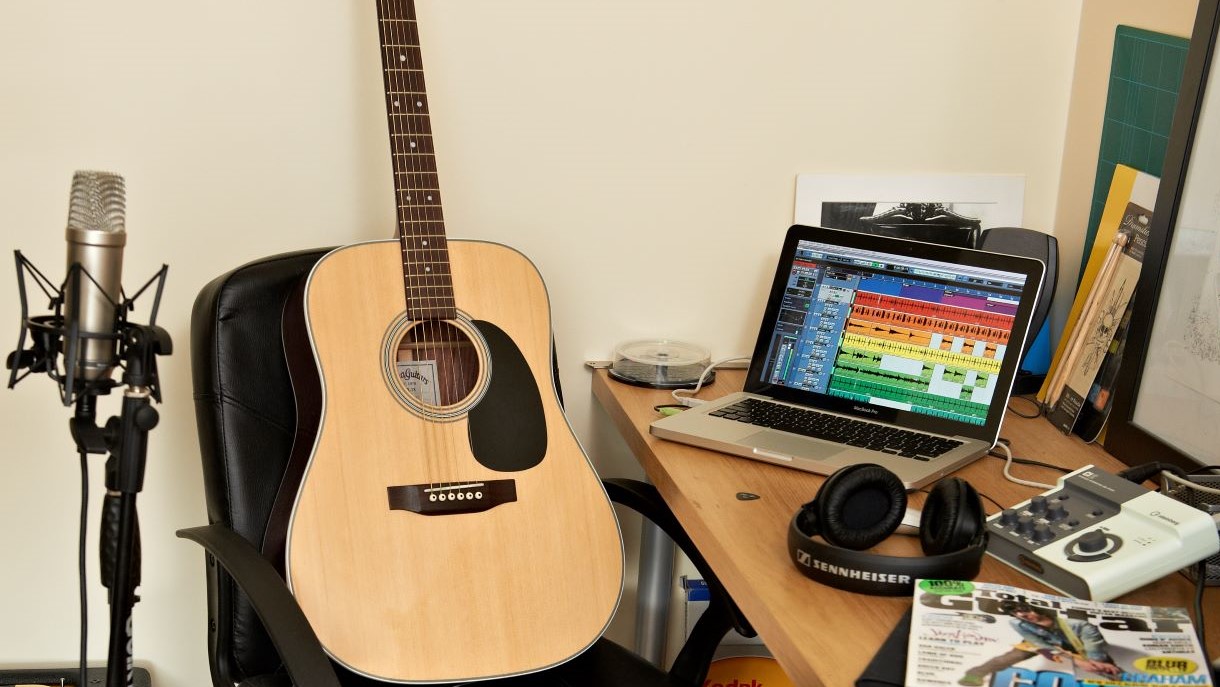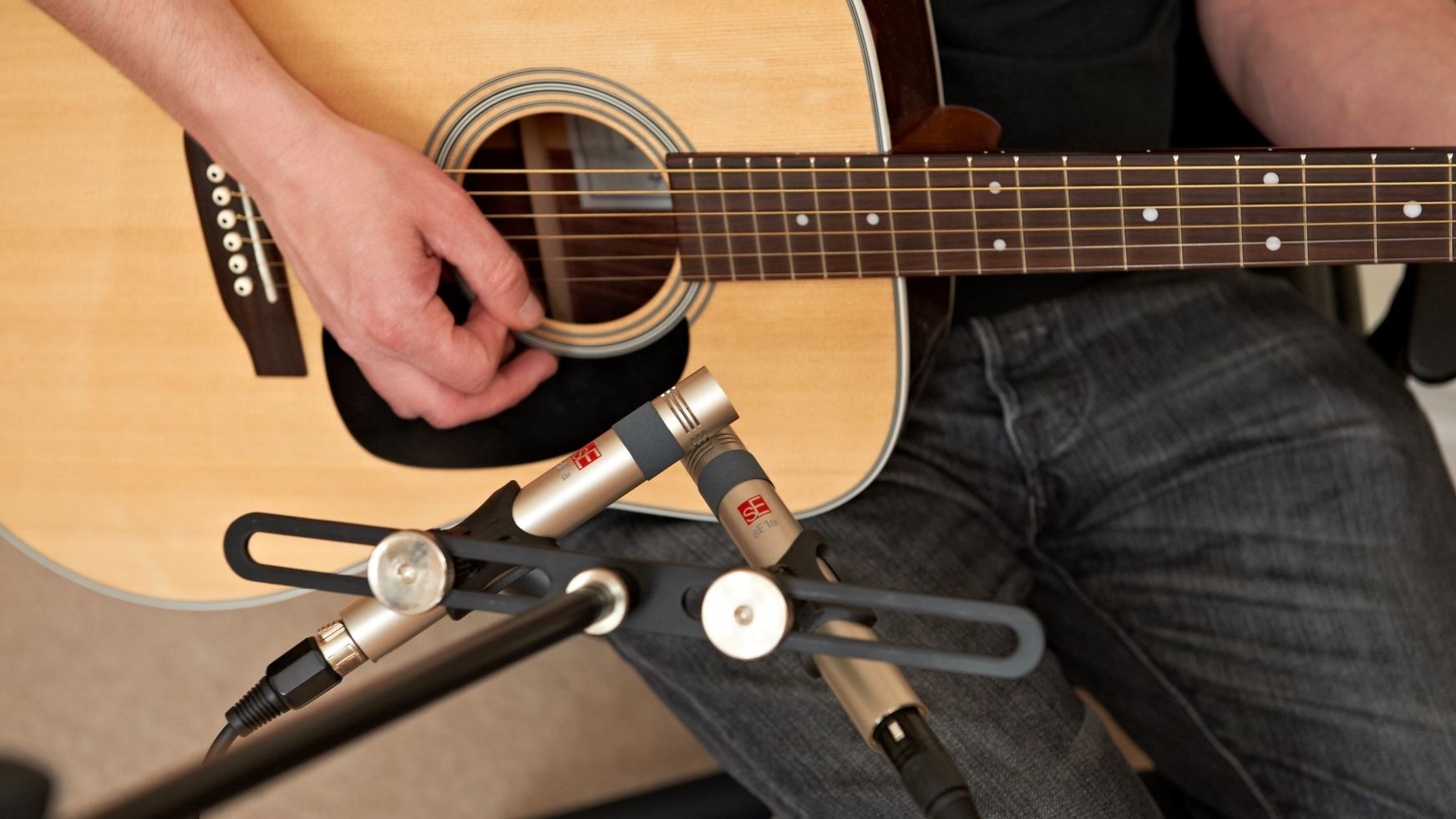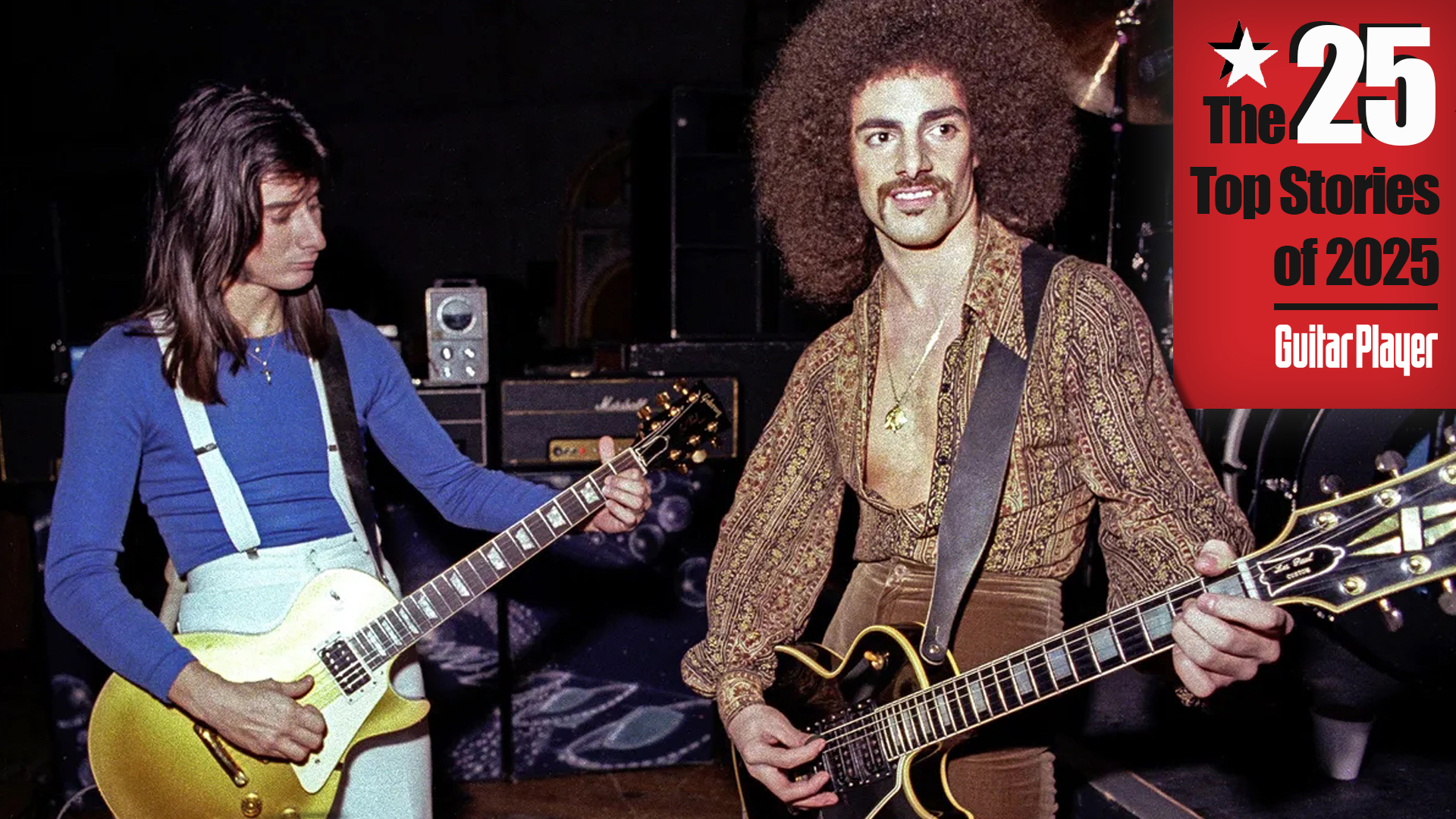Acoustic Recording Made Easy: Getting Set Up to Record
Get a strong acoustic recording game going in your home studio.

We’d like to share a few insights into digital home recording. Whereas it’s possible to get a great electric guitar sound working “in the box,” the acoustic guitar side remains largely about grabbing great sounds with a microphone, adding yet another layer of complexity to the process.
The good news is that home digital recording is much easier and more affordable than it was just a few years ago. Over the next few instalments of this series we’ll share advice that will help anyone who’s still on the sidelines get a strong acoustic recording game going. So watch out for further articles on recording decisions pertaining to the guitar, strings, accessories, tracking and mixing.
Digital Audio Workstations

The heart of the modern home recording setup is a computer running a digital audio workstation (DAW). After years of evolution, DAWs now look and function in similar fashion. While the differences between using a Mac or a PC aren’t as vast as they once were, the choice of a computer platform is still a major consideration.
Most popular DAWS – including Ableton Live, Cubase, ProTools and Reason – are available for Windows and Mac, whereas programs such as GarageBand and Logic are strictly for the Mac operating system.
The Audio Interface

The audio interface converts analog signals into digital information and vice versa, allowing audio to move in and out of the computer. Some expensive units have no preamps built into them on the assumption that the well-heeled user will want to select and use their own separate preamp. However, affordable interfaces typically incorporate preamps and offer some combination of 1/4-inch and XLR inputs.
Two input channels is satisfactory for recording either a pair of microphones or one mic and one direct signal. To do all of that or more simultaneously – or if you’re a singer/songwriter and want to track vocals as well – it’s better to select an interface with at least four pre-amped inputs.
Audio interfaces have a sonic character of their own, so audition a few to find one you like. Clarity is extremely important to acoustic tones, so buy the best you can afford, but don’t feel you have to opt for the most expensive unit. After much testing, we discovered good options exist throughout the price range.
All the latest guitar news, interviews, lessons, reviews, deals and more, direct to your inbox!
Mics and Channel Strips

Microphones vary dramatically in quality and cost, and, like audio interfaces, the two are not always strictly aligned. If you can acquire a quality small-diaphragm condenser, a ribbon mic and a basic dynamic mic such as a Shure SM57, you’ll have your acoustic guitar bases covered. Enthusiasts of the X/Y miking technique – in which two mics are positioned at right angles with their capsules aligned – may want to buy a matched pair for stereo tracking.
You might also want to consider a channel-strip preamp, which includes a mic preamp as well as EQ and perhaps a compressor, with direct applications for acoustic players and singers. A high-quality analog channel strip can bring out the best in your microphone, so it makes sense to include one in your budget. Some audio interfaces that have preamps may also include an extra line input without a preamp, which is where you’ll want to use a channel strip.
Be forewarned: A home studio can quickly become a money pit. With the possible exception of your guitar, it’s safe to say that a computer, DAW, audio interface, mics and channel strip may be the most expensive music-related items you own if you invest in a home digital recording setup. Research before you buy, and watch your budget. As former GP editor Michael Molenda once said, “Get what you need, but be smart about how much you spend. The most important thing is to stay in the game.”
Jimmy Leslie is the former editor of Gig magazine and has more than 20 years of experience writing stories and coordinating GP Presents events for Guitar Player including the past decade acting as Frets acoustic editor. He’s worked with myriad guitar greats spanning generations and styles including Carlos Santana, Jack White, Samantha Fish, Leo Kottke, Tommy Emmanuel, Kaki King and Julian Lage. Jimmy has a side hustle serving as soundtrack sensei at the cruising lifestyle publication Latitudes and Attitudes. See Leslie’s many Guitar Player- and Frets-related videos on his YouTube channel, dig his Allman Brothers tribute at allmondbrothers.com, and check out his acoustic/electric modern classic rock artistry at at spirithustler.com. Visit the hub of his many adventures at jimmyleslie.com
